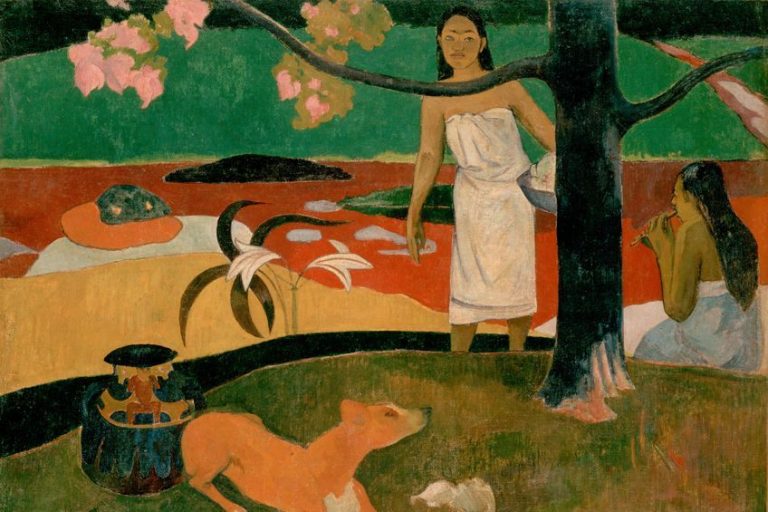Aegean Art – Exploring Ancient Treasures
Aegean art stands as a testament to the rich cultural heritage and artistic prowess of the ancient civilizations that flourished around the Aegean Sea during the Bronze Age, roughly spanning from 3000 BCE to 1000 BCE. Encompassing the art of the Minoans on the island of Crete, the Mycenaeans on mainland Greece, and the Cycladic Islanders, Aegean art reflects a fascinating interplay of religious, social, and political dynamics. Characterized by intricate frescoes, exquisite pottery, majestic architecture, and intricate sculptures, Aegean art offers invaluable insights into the beliefs, rituals, and daily life of these enigmatic societies. Through its distinctive iconography and stylistic innovations, Aegean art continues to captivate scholars and enthusiasts alike, unraveling the mysteries of an ancient world steeped in beauty and creativity.
Key Takeaways
- Aegean art represents the Bronze Age cultural achievements of Cycladic, Minoan, and Mycenaean societies.
- Artistic methods ranged from the Cycladic islands’ geometric figurines to Crete’s complex Minoan frescoes and Mycenae’s fortified palatial structures.
- Despite the disappearance of these cultures, their art continues to inform our understanding of ancient European civilizations and their legacies.
Emergence of Aegean Art
Aegean art encompasses the creative expressions of the Cycladic, Minoan, and Mycenaean civilizations, flourishing in and around the Aegean Sea during the Bronze Age. This period extends from approximately 2800 to 1100 BC and is considered a precursor to Classical Greek Art. The artworks and cultural artifacts of these ancient societies exhibit distinct styles and techniques, ranging from the abstract simplicity of Cycladic figurines to the vibrant frescoes and palatial architecture of the Minoans, ending with the militaristic influence seen in Mycenaean art.
Notably, these civilizations contributed significantly to the foundation of European art, laying the groundwork for future artistic advancements.
The art produced by these Aegean cultures often reflects their interactions with neighboring regions, displaying evidence of trade and cultural exchange across the Mediterranean. For example, Minoan wall paintings show Egyptian influences, signaling a broader international connection during the late Bronze Age. Despite the loss of these civilizations, their art remains a subject of interest for its historical importance and aesthetic appeal. Archaeologists and art historians continue to study the remaining artifacts, allowing us to piece together a picture of societies whose advanced workmanship and sophisticated artistry suggest a high degree of civilization.

Cycladic Art
Cycladic art, dating from circa 3300 to 1100 BCE, is characterized by its abstract figural sculptures. Made primarily from marble, these figurines often represent simplified human figures with folded arms and a stark absence of facial features, highlighting a refined sense of abstraction.
Minoan Art
Originating on Crete, the heartland of Minoan civilization, Minoan art flourished from around 2600 to 1100 BCE. The Palace at Knossos is a testament to its advanced architecture, with its complex layout and vibrant frescoes depicting scenes from nature and bull-leaping. Minoans had a strong connection with the natural world, which is vividly expressed in their art.
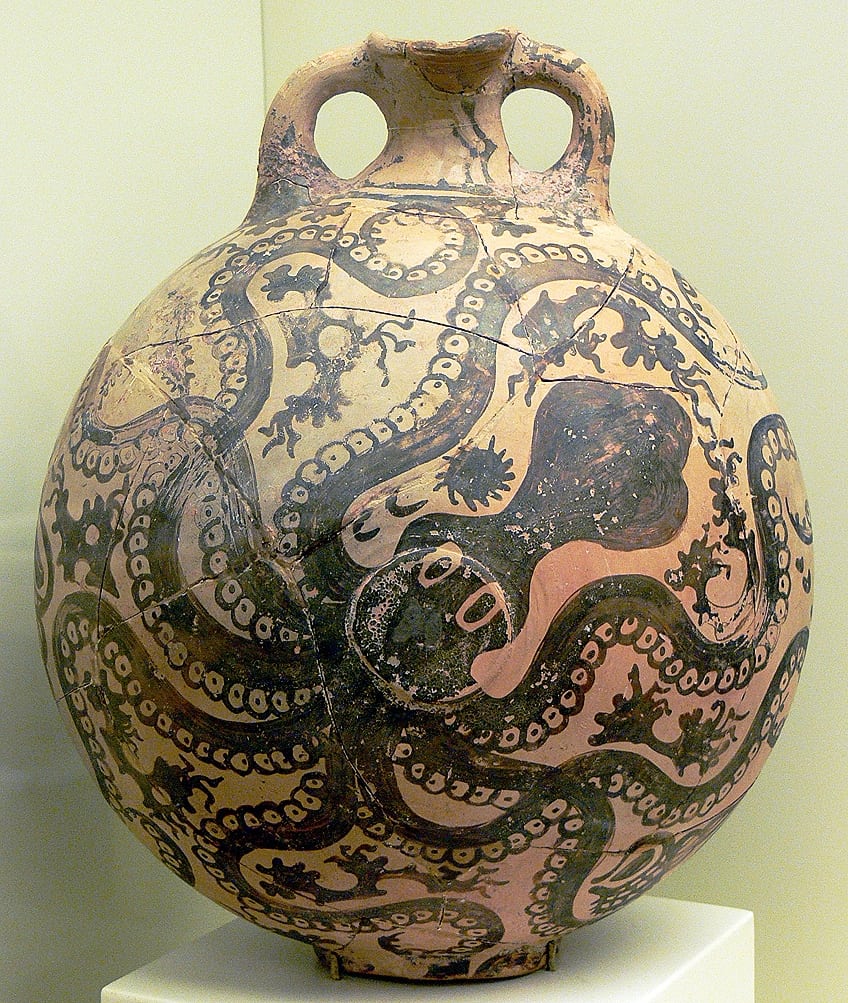
Mycenaean Art
With a timeline stretching from 1600 to 1100 BCE, Mycenaean art depicts the prowess of a civilization that dominated the Greek Mainland. Rich grave goods from sites like Grave Circle A at Mycenae, including objects made of gold such as the famous Mask of Agamemnon, and the imposing Lion Gate, reflect the Mycenaeans’ power and wealth.
Artistic Influences
The art of the Aegean civilization bears evidence of cross-cultural interactions. Trade with civilizations like Egypt and Mesopotamia brought in new artistic techniques and motifs, which were then adapted into the unique styles of Aegean art.
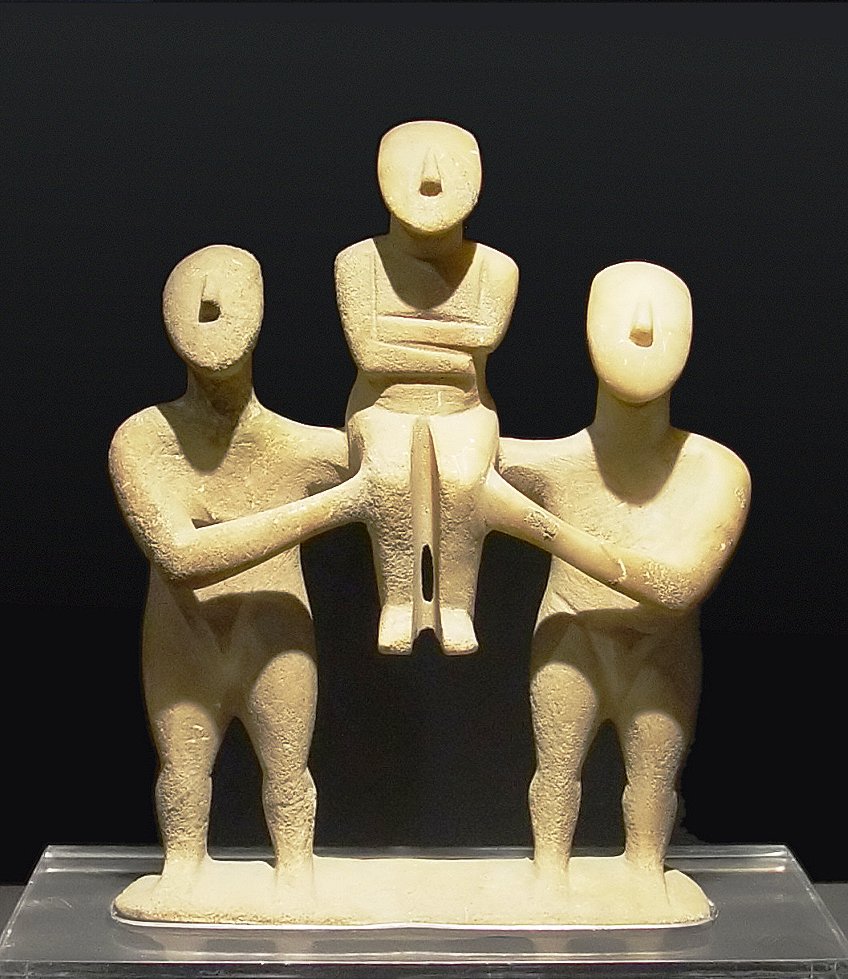
Notable Artifacts and Structures
In the realm of Aegean art, each civilization contributes iconic artifacts and structures that epitomize their unique artistic expressions and technical prowess. The Cycladic civilization bequeaths us its enigmatic figurines, hewn meticulously from marble, embodying a serene yet enigmatic beauty. Meanwhile, the Minoans leave an indelible mark with the grandeur of the Palace at Knossos, a testament to their advanced architectural and fresco techniques, capturing vibrant scenes of daily life and mythological narratives.
From the Mycenaean civilization emerges the legendary Mask of Agamemnon, crafted from gleaming gold, symbolizing power, prestige, and a profound connection to ancient rituals and beliefs.
Each artifact and structure, from the Cycladic figurines to the Mask of Agamemnon, serves as a window into the rich tapestry of Aegean civilization, revealing the depth of their artistic ingenuity and cultural significance. These artifacts not only illustrate artistic skill but also the prominence of palaces, sculptures, and pottery in Aegean societies’ religious practices and daily life.
Society and Culture
Aegean art is deeply intertwined with the society and culture of its people. Frescoes and pottery depict scenes of agriculture, trade, warfare, and religion, offering a lens into the communal practices and beliefs. Palaces were not only residential but also cultural and administrative hubs, reflecting the structured hierarchy and complexity of their civilizations.
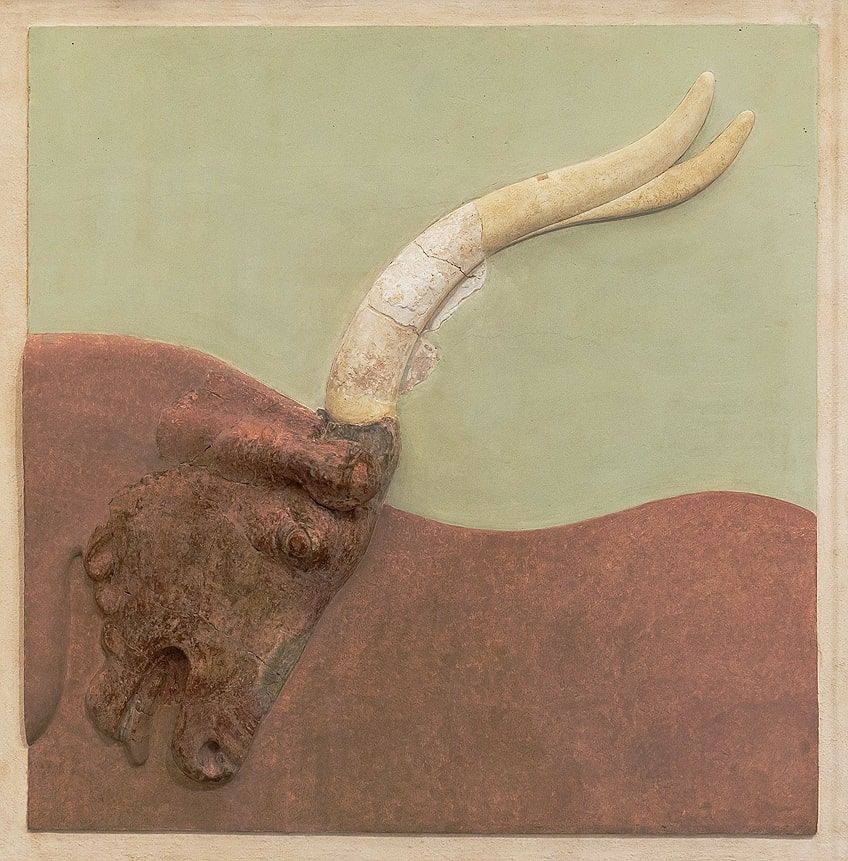
Artistic Development and Techniques
Aegean art witnessed significant advancements in artistic techniques and styles during the Bronze Age, reflecting the cultural and technological developments of three key civilizations: the Cycladic, Minoan, and Mycenaean.
Architecture and Urban Planning
The Aegean region saw the inception of complex architectural forms, with the Minoan palaces such as Knossos being the most notable for their advanced urban planning. These palaces featured an intricate layout of rooms, central courtyards, and religious spaces. Mycenae, a fortress-like citadel, is distinguished by its military architecture and the use of the megaron, a large rectangular hall.

Sculpture and Figurines
Sculptures from the Aegean encompass both the realistic depictions found in Mycenaean art and the stylized, abstract forms of Cycladic figurines. Cycladic artists utilized marble to carve out slender, geometric forms of the human figure, often depictions of women, which were typically found in burial contexts.
Mycenaean art is known for more naturalistic gold masks and ivory carvings.
Pottery and Ceramics
Aegean pottery evolved from simple designs to more sophisticated works over time. Cycladic pottery remained relatively simple but functional. In contrast, Mycenaean pottery featured a variety of shapes, including the stirrup jar with octopus, characterized by marine and natural motifs executed with precision and fluidity.
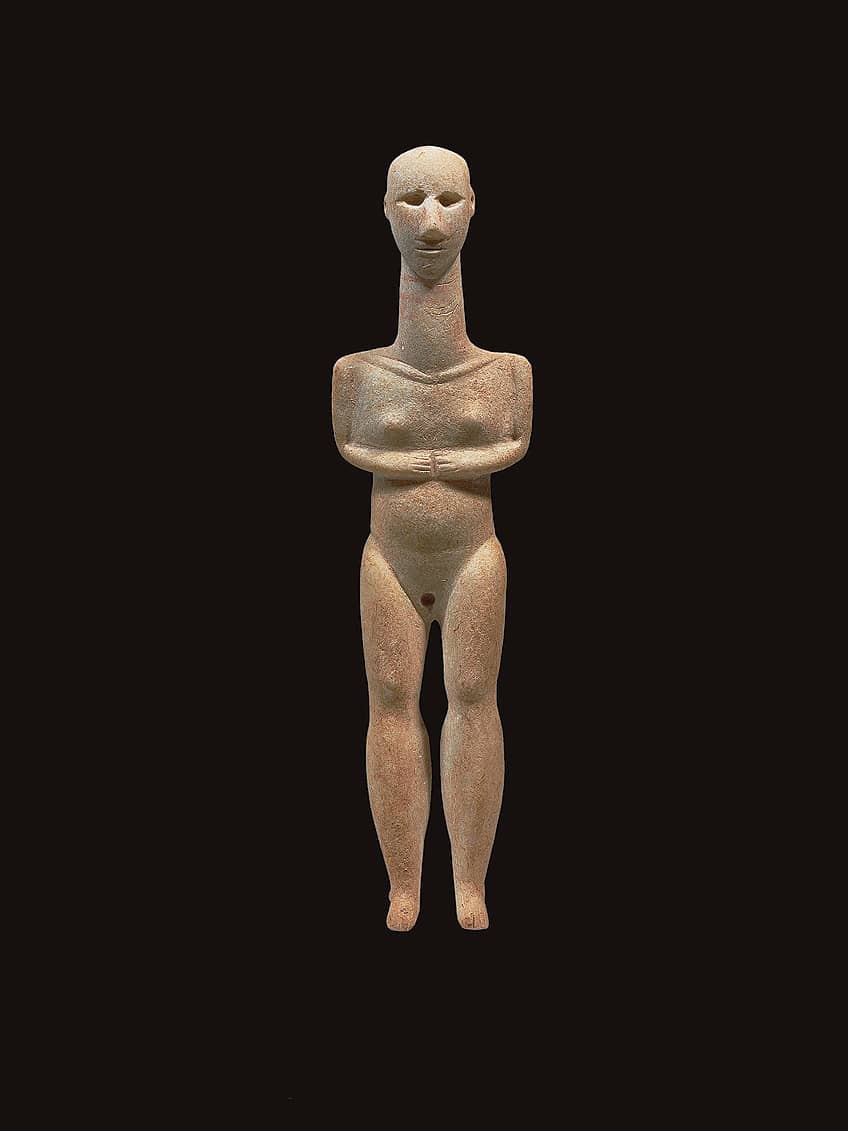
Fresco Painting and Murals
The Minoans were renowned for their vibrant frescoes and murals decorating palace walls. Notable examples include the Bull-Leaping Fresco, which showcases both motion and narrative in a composition. These wall paintings often depicted nature, bulls, animals, sea creatures, and religious rituals with natural pigments.
Metalwork and Jewelry
The art of metalwork and jewelry in Aegean cultures reached high levels of craftsmanship. Artisans used gold and other metals to produce ornate gold jewelry and intricately designed daggers, often inlaid with precious materials. The richness of these artifacts indicates not only their artistic capability but also the wealth and power of their patrons.
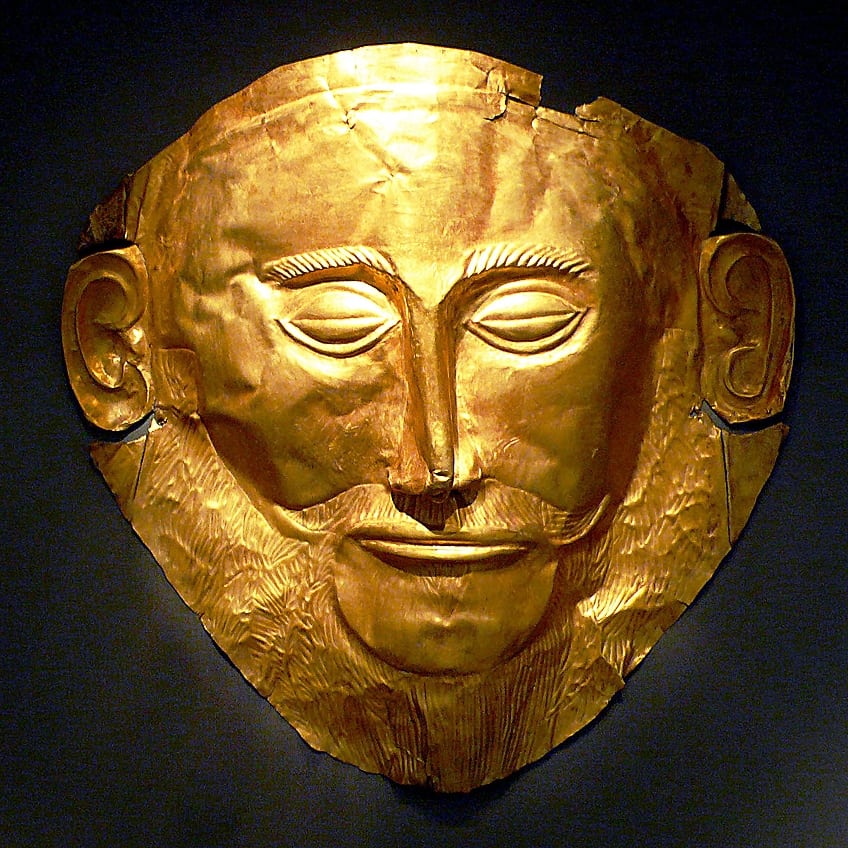
Iconography and Symbolism
Aegean art is rich in iconography and symbolism, with recurring motifs of bulls, marine life, and natural elements indicating the importance of the sea and nature in their society. The use of these symbols varies across the different civilizations, where each has its own distinct set of icons that held cultural or religious significance.
Cultural Interaction and Legacy
Aegean art reflects a dynamic exchange of ideas and interaction between cultures, greatly influencing Greek art and extending its legacy to regions beyond the Greek mainland.

Trade and Exchange
The Aegean Sea was the backbone of trade and seafaring activities during the Bronze Age, with the Cyclades prominently involved in maritime commerce. Trade networks established by these island communities facilitated the exchange of not only goods but also artistic ideas and techniques.
Artifacts such as pottery, metalwork, and frescoes bear witness to this cultural interaction, showcasing a blend of styles and motifs across the region.
Influence on Greek Art
The impact of Aegean art on later Greek art is unquestionable. Pictorial techniques and motifs developed by the Minoan and Mycenaean civilizations provided a foundational artistic vocabulary that would echo through subsequent Greek epochs. Renowned figures like Homer may have drawn inspiration from these art forms, with tales like Agamemnon’s possibly reflecting the magnificence of Aegean artwork in their descriptions.

Artistic Legacy Beyond Greece
The artistic legacy of Aegean civilizations extended far beyond the Greek mainland, influencing Roman art and even leaving traces discernible during the Renaissance. Furthermore, the abstract figurative representations seen in Cycladic art resurfaced in the sculptures of modern artists, such as Henry Moore, indicating the enduring appeal and influence of Aegean artistry.
Preservation and Interpretation
Critical to the understanding of Aegean art are the efforts surrounding its preservation and interpretation. These efforts include meticulous archaeological work to uncover artifacts, the application of technology in art historical analysis, the continuous battle against environmental and human-induced deterioration, and the strategies for effectively educating the public about this ancient culture.

Archaeological Discoveries
Aegean art, spanning the Cycladic, Minoan, and Mycenaean periods, owes much to the archaeological discoveries by individuals such as Heinrich Schliemann and Arthur Evans. Schliemann’s excavations at the Citadel of Mycenae unveiled the opulent shaft graves and the iconic Mask of Agamemnon, while Evans’s work at the Palace at Knossos in Crete gave insights into Minoan civilization, revealing elaborate frescoes and artifacts.
Technology and Art History
The field of art history heavily relies on technology for both preservation and interpretation. Techniques like infrared spectroscopy and 3D reconstruction allow historians to better understand the materials and methods used by ancient artists. These technologies aid in dating works, identifying past restorations, and even virtually restoring damaged or eroded pieces.

Challenges in Conservation
Conservation of Aegean art is challenged by environmental factors, such as humidity and temperature fluctuations, which can accelerate deterioration. The preservation work, as carried out on the Palace at Knossos by Piet De Jong over nearly three decades, often involves stabilizing structures and preventing further damage by using modern materials and techniques that balance restoring appearance with maintaining historical integrity.
Public Engagement and Education
Websites and educational programs play crucial roles in engaging the public with Aegean art. These platforms provide resources for learning about key places, such as Knossos, and significant topics, like the influence of Aegean art on sports and the Olympics. Education through these means helps ensure that the rich heritage of Aegean civilizations remains accessible and understood by current and future generations.

Aegean art stands as a timeless testament to the ingenuity, creativity, and cultural vibrancy of the ancient Aegean civilizations. Through the meticulous craftsmanship of its sculptures, the vibrant hues of its frescoes, and the enduring beauty of its pottery, Aegean art not only showcases the artistic mastery of its creators but also offers invaluable insights into the religious, social, and political fabric of the Bronze Age societies. Despite the passage of millennia, Aegean art continues to inspire awe and fascination, inviting contemporary viewers to delve into the mysteries and marvels of a bygone era. As we continue to unearth new artifacts and decipher their meanings, Aegean art remains an enduring symbol of human expression and the never-ending quest for beauty and understanding.
Frequently Asked Questions
What Are the Distinctive Characteristics of Aegean Art?
Aegean art is characterized by its geometric simplicity, maritime themes, and use of both natural and supernatural motifs. The Cycladic culture is famed for its schematic, almost abstract figurines, often carved in marble. Minoan art is recognized for its fluid, naturalistic style and frescoes, which depict both peaceful and ceremonial scenes. Mycenaean art is notable for its architectural prowess, as seen in the Lion Gate, and its more martial and somber themes.
How Did Geography Influence the Art of the Aegean Cultures?
The isolated islands and the sea-based lifestyle of the Aegean societies deeply influenced their art. The surrounding sea is a recurrent theme throughout Aegean art, reflecting the significance of maritime trade and travel. Additionally, the limited natural resources on islands like the Cyclades led to the use of locally available materials such as marble, which shaped the form and technique of Cycladic art.
What Materials Were Commonly Used in the Creation of Aegean Art Pieces?
Marble was predominantly used by Cycladic artists to carve their signature figurines. Minoan artists utilized a variety of materials, including fine ceramics for pottery, stucco, wood, and fresco techniques on their palace walls. Mycenaeans favored stone for architecture and metals like gold for funerary masks and decorative objects, reflecting their skills in metalwork and construction.
Isabella studied at the University of Cape Town in South Africa and graduated with a Bachelor of Arts majoring in English Literature & Language and Psychology. Throughout her undergraduate years, she took Art History as an additional subject and absolutely loved it. Building on from her art history knowledge that began in high school, art has always been a particular area of fascination for her. From learning about artworks previously unknown to her, or sharpening her existing understanding of specific works, the ability to continue learning within this interesting sphere excites her greatly.
Her focal points of interest in art history encompass profiling specific artists and art movements, as it is these areas where she is able to really dig deep into the rich narrative of the art world. Additionally, she particularly enjoys exploring the different artistic styles of the 20th century, as well as the important impact that female artists have had on the development of art history.
Learn more about Isabella Meyer and the Art in Context Team.
Cite this Article
Isabella, Meyer, “Aegean Art – Exploring Ancient Treasures.” Art in Context. March 6, 2024. URL: https://artincontext.org/aegean-art/
Meyer, I. (2024, 6 March). Aegean Art – Exploring Ancient Treasures. Art in Context. https://artincontext.org/aegean-art/
Meyer, Isabella. “Aegean Art – Exploring Ancient Treasures.” Art in Context, March 6, 2024. https://artincontext.org/aegean-art/.








